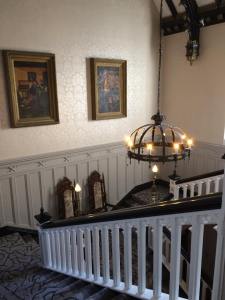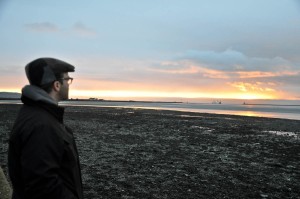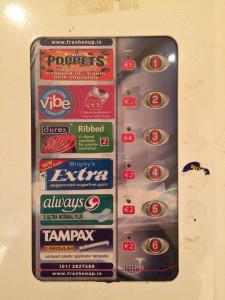Our son had called the tune when the singer invited requests. “The Rocky Road to Dublin” was the second of the boy’s picks honored that night (the first, “Galway Races”). The crowd of pensioners packing the small hotel bar in Tuesday-night Donegal took a shine to the wee lad from America with a taste for Irish tradition. It was well past 10, but the boy was fighting sleep – afraid to miss a minute.
When he reached the end of that verbose “Road”, the singer called out for more. An old lady piped up.
“‘Danny Boy’,” said she with a tone of good-natured frustration. “I’ve asked for ‘Danny Boy’ three times now.”
Like Ronald Reagan dodging questions from the press corps at the door of Air Force One, the singer pretended, for the third time, not to hear. Instead, he issued a musical plea to be taken home by way of “Country Roads”.
Go raibh maith agat, I thought, for I share his evident disdain for “Danny Boy”, the go-to anthem for every dyed beer-swilling frat boy in a green plastic derby, the obligatory sendoff for every ward-boss before he’s planted in the ground. Ironically, this insufferably sappy tune – held dear by Irish communities around the world – was, in fact, penned by an Englishman. These traits, when juxtaposed with the infinite canon of fine Irish music new and old (or even the John Denver catalogue), permit no justifiable cause for suffering “Danny Boy”.
Frankly, I just don’t get it.
Though often reduced to drunk and downtrodden caricature, Irish music is, in fact, rife with a kind of exuberance that is at once comic and tragic, and it often employs a dark, inherent brand of humor which, at its best, may be equitably applied to both cirrhosis and the RIC.
“It’s not that the Irish are cynical,” author Brendan Behan once noted. “It’s rather that they have a wonderful lack of respect for everything and everybody.” Behan certainly fit that bill, as did his brother, Dominic. The latter, himself an author, singer, and songwriter, had a paradoxical sensibility that could at once convey humor and sorrow, loyalty and insolence. It fully manifests in his recording of the jaunty “A Grand Old Country”, written by the Behan boys’ uncle, renowned rebel songwriter Peadar Kearney:
We’ll pray for mother England while I’m waiting on the day
I’ll pray for mother England ’til I’m blind and bald and grey
I’ll pray that I and she may die, and drown that she may drown
And if ever she tries to lift her head I’ll be there to push it down
But Behan is but one voice in a musical oeuvre that includes Planxty, the Dubliners, the Wolf Tones, the Clancys and Tommy Makem (who introduced the world to Irish music), but also Enya, Thin Lizzy, The Cranberries, Van Morrison…to name very few.
Just not U2, who might be the only humorless lot in the bunch.
I don’t know if the old lady’s request was ever fulfilled, as the craic was still going full bore when we retired for the night. But it was not the last we saw of her. The next morning, we crossed paths in the hotel lobby. She and a friend of similar age engaged our son with a few friendly words, and complimented us on his conduct. Many Irish, we observed throughout our travels across the Emerald Isle, seem to have a soft spot for children.
Maybe that explains “Danny Boy”?

































